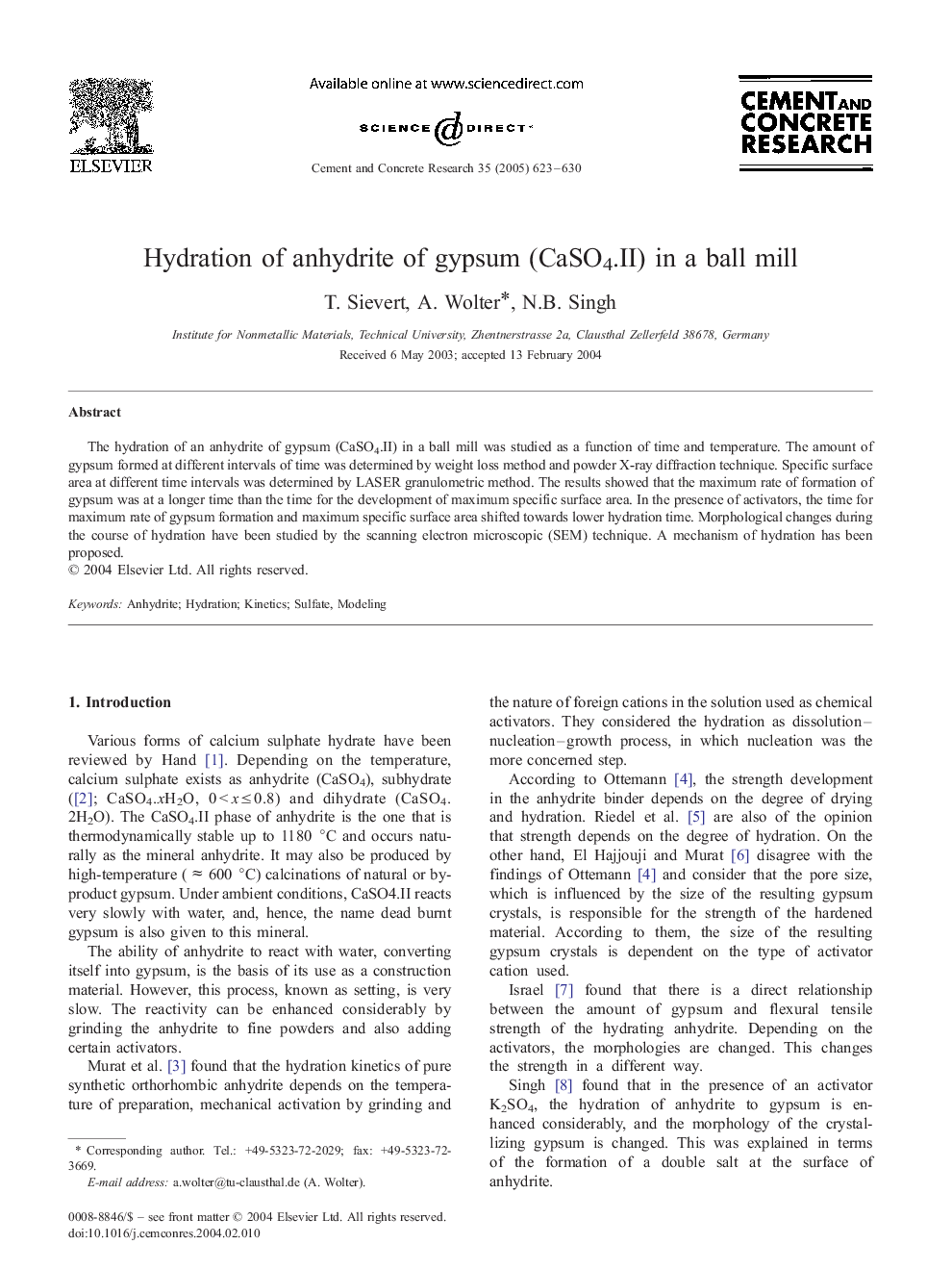| Article ID | Journal | Published Year | Pages | File Type |
|---|---|---|---|---|
| 10622381 | Cement and Concrete Research | 2005 | 8 Pages |
Abstract
The hydration of an anhydrite of gypsum (CaSO4.II) in a ball mill was studied as a function of time and temperature. The amount of gypsum formed at different intervals of time was determined by weight loss method and powder X-ray diffraction technique. Specific surface area at different time intervals was determined by LASER granulometric method. The results showed that the maximum rate of formation of gypsum was at a longer time than the time for the development of maximum specific surface area. In the presence of activators, the time for maximum rate of gypsum formation and maximum specific surface area shifted towards lower hydration time. Morphological changes during the course of hydration have been studied by the scanning electron microscopic (SEM) technique. A mechanism of hydration has been proposed.
Related Topics
Physical Sciences and Engineering
Engineering
Industrial and Manufacturing Engineering
Authors
T. Sievert, A. Wolter, N.B. Singh,
